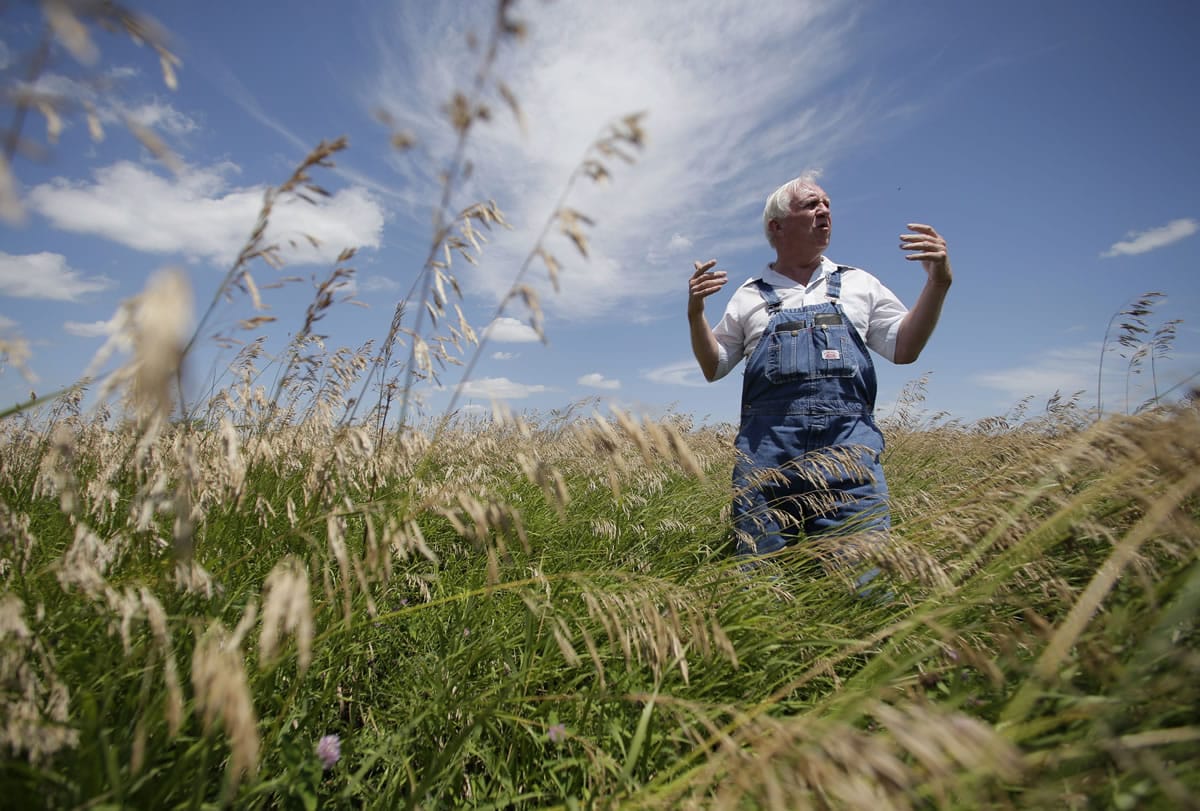CORYDON, Iowa — The hills of southern Iowa bear the scars of America’s push for green energy: The brown gashes where rain has washed away the soil. The polluted streams that dump fertilizer into the water supply.
Even the cemetery that disappeared like an apparition into a cornfield.
It wasn’t supposed to be this way.
With the Iowa political caucuses on the horizon in 2007, presidential candidate Barack Obama made homegrown corn a centerpiece of his plan to slow global warming. When President George W. Bush signed a law that year requiring oil companies to add billions of gallons of ethanol to their gasoline each year, Bush predicted it would make the country “stronger, cleaner and more secure.”
But the ethanol era has proved far more damaging to the environment than politicians promised and much worse than the government admits today.
As farmers rushed to find new places to plant corn, they wiped out millions of acres of conservation land, destroyed habitat and contaminated water supplies, an Associated Press investigation found.
Five million acres of land set aside for conservation — more than Yellowstone, Everglades and Yosemite National Parks combined — have been converted on Obama’s watch.
Landowners filled in wetlands. They plowed into pristine prairies, releasing carbon dioxide that had been locked in the soil.
Sprayers pumped out billions of pounds of fertilizer, some of which seeped into drinking water, polluted rivers and worsened the huge dead zone in the Gulf of Mexico where marine life can’t survive.
The consequences are so severe that environmentalists and many scientists have now rejected corn-based ethanol as bad environmental policy. But the Obama administration stands by it, highlighting its benefits to the farming industry rather than any negative consequences.
Price too high?
All energy comes at a cost. The environmental consequences of drilling for oil and natural gas are well documented and severe. But in the president’s push to reduce greenhouse gases and curtail global warming, his administration has allowed so-called green energy to do not-so-green things.
In some cases, such as the decision to allow wind farms that sometimes kill eagles, the administration accepts environmental costs because they pale in comparison with the havoc global warming could ultimately cause.
In the case of ethanol, the administration believes it must encourage the development of next-generation biofuels that will someday be cleaner and greener than today’s.
But next-generation biofuels haven’t been living up to expectations. And the government’s predictions on ethanol have proved so inaccurate that independent scientists question whether it will ever achieve its central environmental goal: reducing greenhouse gases.
That makes the hidden costs even more significant.
“They’re raping the land,” said Bill Alley, a Democratic member of the board of supervisors in Wayne County, Iowa.
The numbers behind the ethanol mandate have become so unworkable that, for the first time, the EPA is soon expected to reduce the amount of ethanol required to be added to the gasoline supply. An unusual coalition of big oil companies, environmental groups and food companies is pushing the government to go even further and reconsider the entire ethanol program.
But the Obama administration stands by the mandate and rarely acknowledges that green energy requires any trade-offs.
“There is no question air quality, water quality is benefiting from this industry,” Agriculture Secretary Tom Vilsack told ethanol lobbyists recently.
But the administration has never conducted studies to determine whether that’s true.
Fertilizer, for instance, can make drinking water toxic. Children are especially susceptible to nitrate poisoning, which causes “blue baby” syndrome and can be deadly.
Between 2005 and 2010, corn farmers increased their use of nitrogen fertilizer by more than a billion pounds. More recent data isn’t available from the Agriculture Department, but conservative projections suggest another billion-pound increase since then.
Then there’s the land conversion, the most controversial and difficult-to-predict outcome.
Digging up grassland releases greenhouse gases, so environmentalists are skeptical of anything that encourages planting more corn.
Losing millions of conservation acres was bad. Plowing over untouched prairies was worse.
Using satellite data — the best tool available — The Associated Press identified at least 1.2 million acres of virgin land in Nebraska and the Dakotas that have been converted to corn and soybean fields since 2006.



